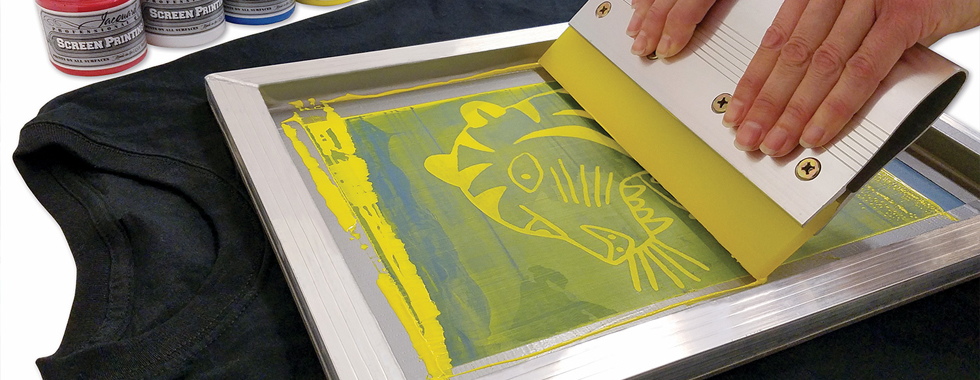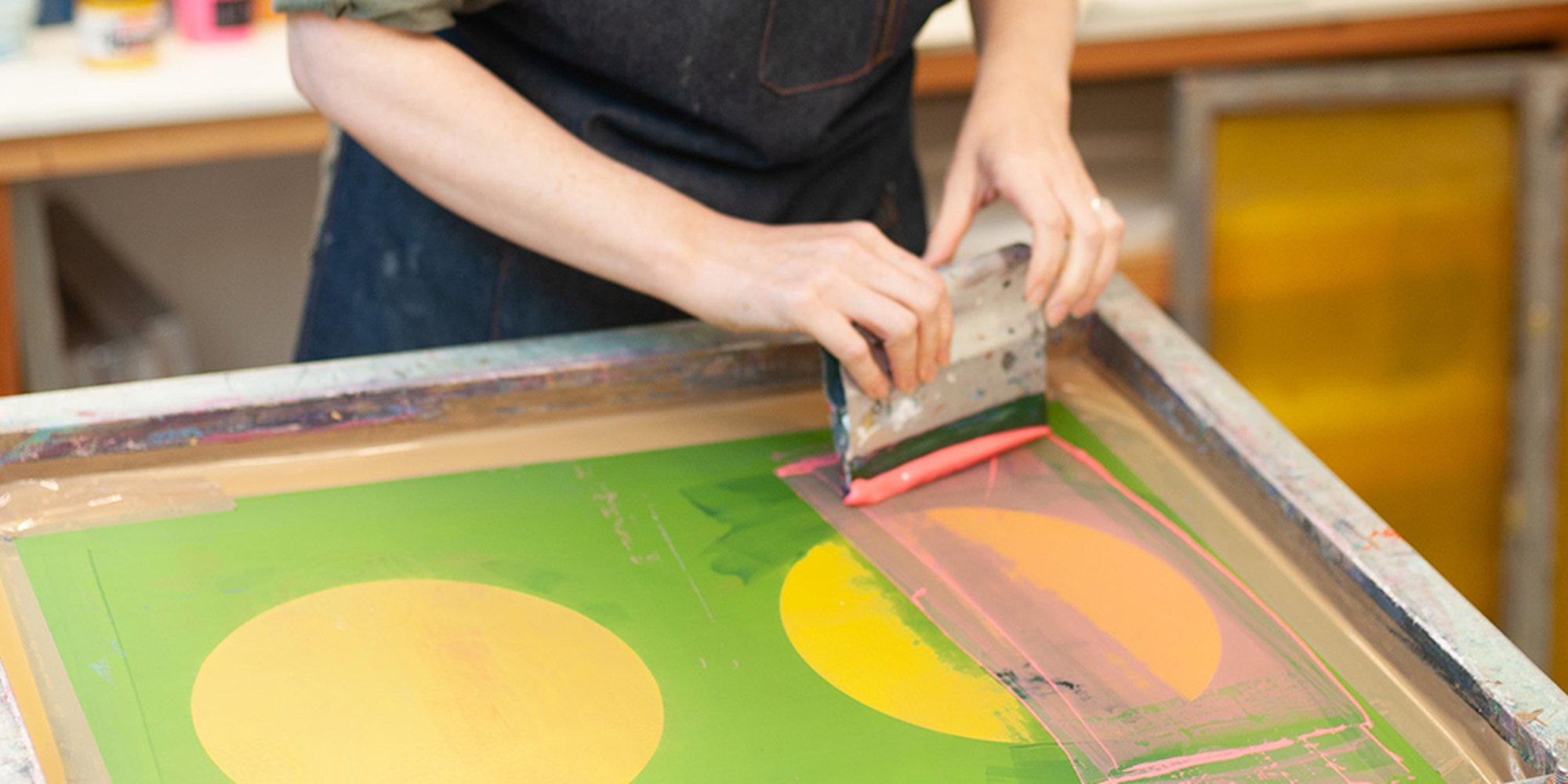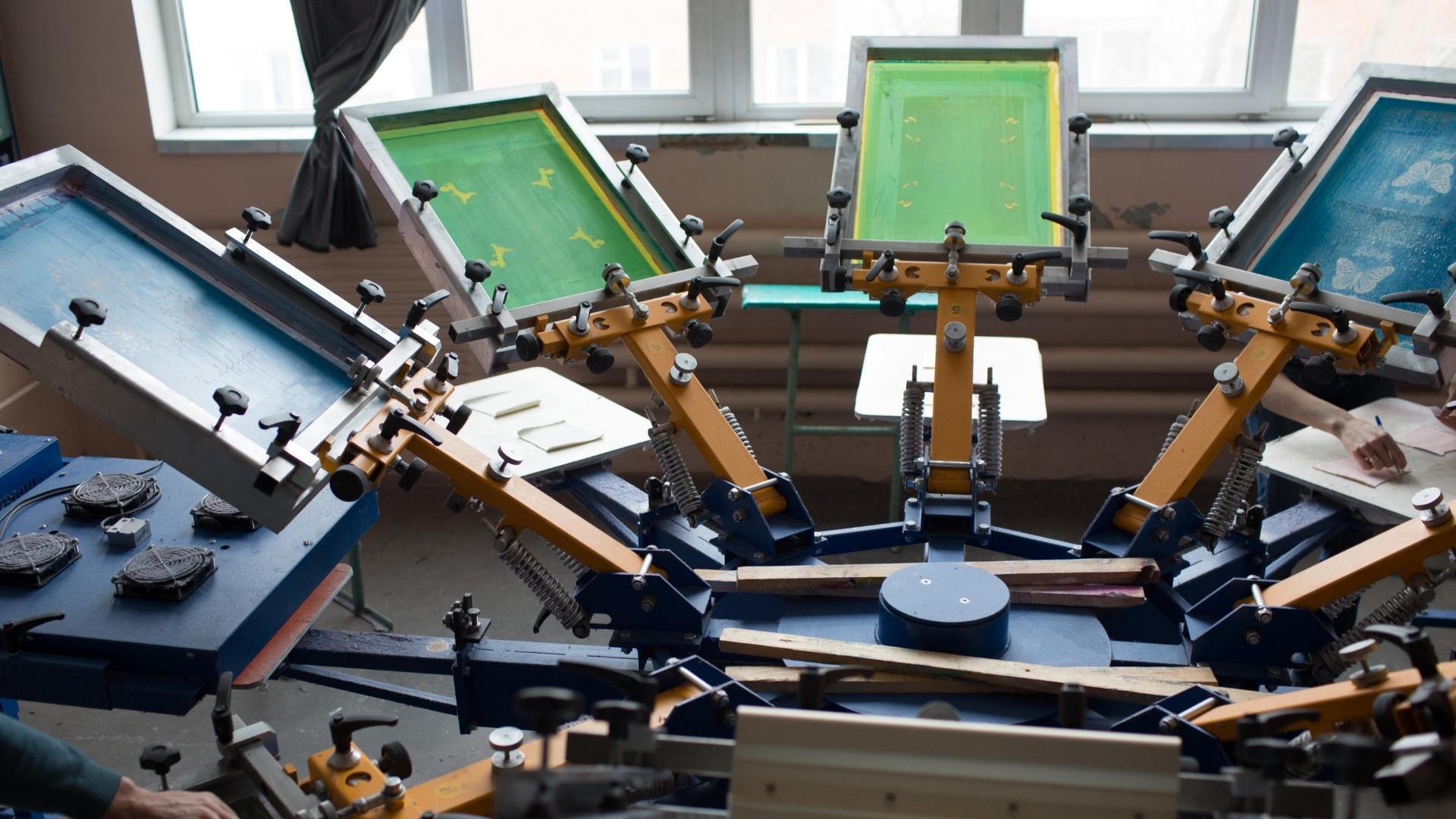The Necessary Guide to Comprehending Screen Printing and Its Versatile Makes use of
Screen printing has a rich history that dates back to old times, advancing into a sophisticated technique used across various sectors today. This overview discovers the details of the screen printing process, detailing its applications in marketing, fashion, and home décor - 10:9 Design Abilene. Recognizing these principles can open creative potential for both industrial and imaginative tasks. The adhering to areas will disclose important suggestions and methods to enhance one's screen printing endeavors
The Background of Screen Printing
Although screen printing has roots that trace back centuries, its development reflects the imaginative and technical improvements of various societies. Coming from in old China, the technique was originally made use of for embellishing textiles and later spread to Japan, where it became essential to Ukiyo-e woodblock printing. The approach changed to Europe in the 18th century, where it acquired popularity amongst artisans and industrial printers. The innovation of picture emulsion in the 20th century reinvented screen printing, enabling for more detailed designs and better efficiency. Musicians like Andy Warhol better propelled its appeal, utilizing the medium to develop renowned jobs that combined commercialism and art. By the late 20th century, screen printing had actually established itself as a functional strategy, used in fashion, marketing, and art. Today, it proceeds to advance, incorporating digital modern technology and increasing its applications throughout numerous sectors.
The Screen Printing Refine Explained
Screen printing changes artistic visions right into concrete designs via a collection of specific steps. Originally, an image is created and after that transferred onto a screen, normally made of fine mesh material extended over a frame. A light-sensitive solution is used to the screen, which is revealed to light, setting in locations not covered by the picture. After washing out the unhardened emulsion, a stencil is created.
Next, the screen is placed over the substrate, whether it be textile, paper, or one more product. Ink is then pressed through the open locations of the pattern using a squeegee, depositing the layout onto the substratum below. This procedure can be repeated for multiple colors, requiring different displays for each and every shade. The published product is healed utilizing warm to assure the ink sticks properly, resulting in a resilient, vibrant design ready for use.
Kinds of Screen Printing Techniques

Furthermore, specialty methods, such as discharge screen printing, eliminate color from the material to create softer prints, while aluminum foil screen printing uses metallic aluminum foil to achieve a shiny surface (10:9 Design reviews). Each method provides distinctive features, satisfying numerous innovative needs and production ranges, eventually broadening the possibilities within the screen printing domain name
Applications of Screen Printing in Different Industries

Furthermore, the signage and advertising markets utilize screen printing for creating eye-catching displays and banners. This approach allows for strong shades and intricate designs that record focus. In electronic devices, screen printing is employed for using conductive inks to circuit card, crucial for find element connections. The home decoration market embraces screen printing to produce unique layouts on fabrics and wall art. In general, screen printing serves as a critical tool across varied fields, improving items with individualized and visually enticing graphics.
Tips for Effective Screen Printing Projects
While carrying out a screen printing task, mindful focus to information can significantly enhance the last result. First, choosing top quality materials is necessary; this includes the screen, inks, and substrates. Using ideal mesh counts can impact ink deposition and detail resolution. Preparation is equally important; detailed cleaning of screens and appropriate exposure times ensure crisp prints.
Next, accurate registration is important for multi-color prints. Utilizing alignment devices can help achieve accurate layering. Furthermore, screening prints on scrap materials before manufacturing aids identify prospective issues without losing resources.

Regularly Asked Concerns
What Products Are Ideal for Screen Printing on Material?
Cotton and polyester blends are ideal for screen printing on material due to their durability and ink absorption. In addition, specialized fabrics like silk or canvas can generate one-of-a-kind appearances and coatings, improving the general design high quality.
Exactly how Do I Tidy and Maintain Screen Printing Equipment?
To maintain and cleanse screen printing devices, one must frequently wash screens with suitable solvents, inspect mops for wear, oil moving parts, and shop all products in a dry, dust-free environment to lengthen their life-span.
What Are the Environmental Impacts of Screen Printing?
Screen printing can have substantial ecological influences, consisting of chemical waste from solvents and inks, water use during cleaning procedures, and energy intake. Sustainable methods and eco-friendly products are vital for lessening these negative effects.
Can Screen Printing Be Done at Home Properly?
Screen printing can be successfully done at home with the right products click reference and techniques. Hobbyists can develop investigate this site high quality prints, though success depends upon their ability degree, devices, and understanding of the procedure included.
What Are the Expenses Related To Starting a Screen Printing Company?

Beginning a screen printing company involves expenses for tools, products, and office. Preliminary expenditures typically range from a couple of hundred to several thousand bucks, relying on the scale, top quality of equipment, and desired production capacity.
Screen printing has an abundant background that dates back to ancient times, evolving into an advanced technique utilized throughout different markets today. An additional technique, rotary screen printing, utilizes round displays, helping with constant printing on textile rolls, therefore improving efficiency for large productions. Furthermore, specialized methods, such as discharge screen printing, eliminate dye from the textile to create softer prints, while foil screen printing applies metal foil to attain a shiny surface. In the fashion field, screen printing is commonly utilized to create vivid layouts on apparel, making it possible for brands to showcase their unique designs. Cotton and polyester blends are perfect for screen printing on fabric due to their toughness and ink absorption.